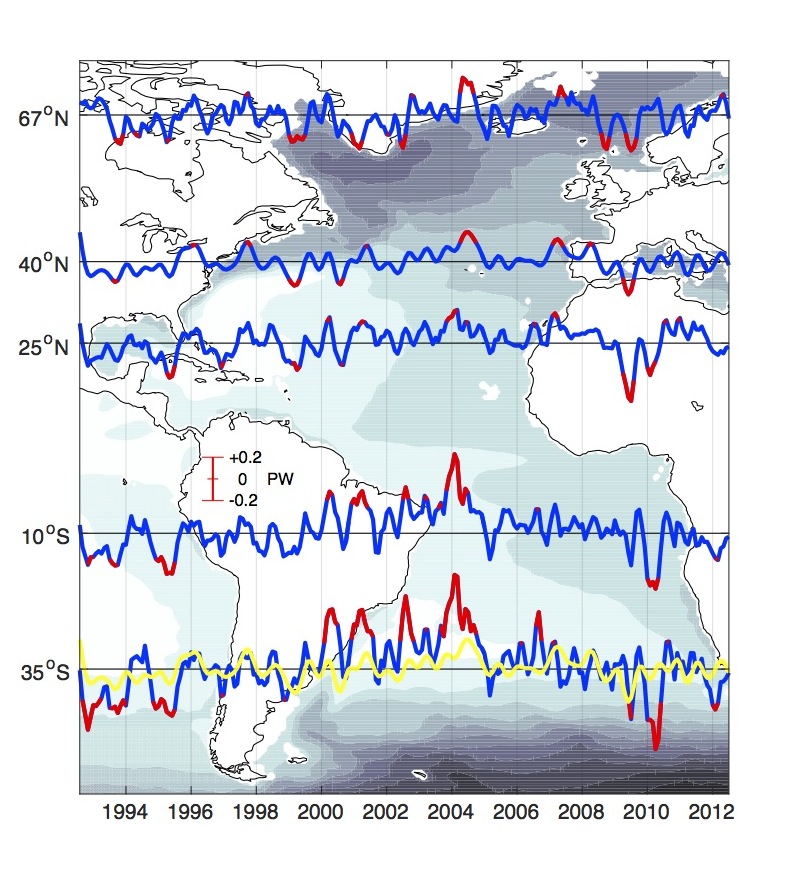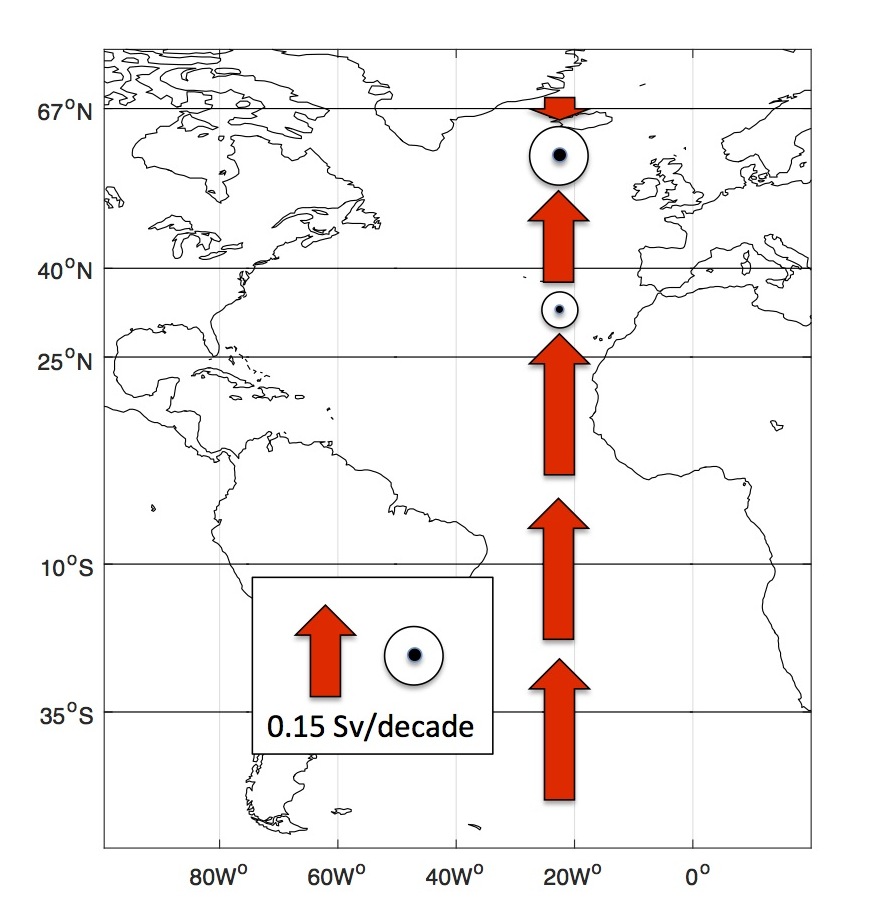Applied Physics Lab, University of Washington
LuAnne Thompson
School of Oceanography, University of Washington
Dewi Le Bars, KNMI Netherlands
Elaine McDonagh, NOC, University of Southampton, UK
Geophysical Research Letters 43, doi:10.1002/2016GL069789
Recent measurements of the strength of the Atlantic overturning circulation at 26oN
show a 1 year drop and partial recovery amid a gradual weakening. To
examine the extent and impact of the slowdown on basin wide heat and
freshwater transports for 2004–2012, a box model that assimilates
hydrographic and satellite observations is used to estimate heat
transport and freshwater convergence as residuals of the heat and
freshwater budgets. Using an independent transport estimate,
convergences are converted to transports, which show a high level of
spatial coherence. The similarity between Atlantic heat transport and
the Agulhas Leakage suggests that it is the source of the surface heat
transport anomalies. The freshwater budget in the North Atlantic is
dominated by a decrease in freshwater flux. The increasing salinity
during the slowdown supports modeling studies that show that heat, not
freshwater, drives trends in the overturning circulation in a warming
climate.
 |
 |
| Meridional heat transport (blue)
with red overplotting indicating periods when the modeled MHT exceeds
the estimated error. MHT at 41oN is repeated in yellow at 35oS. Latitude lines delineate the four regions over which budgets were estimated and the locations of the MHT estimates. |
Trends in freshwater transport
(arrows) across the region boundaries and freshwater convergence (FWC,
dots) within four regions for 2004-2012. Trends in FWC of more than 0.2
Sv/decade are substantially larger than the contributions of the
Greenland Ice Sheet loss and Atlantic river discharge, suggesting
that ocean circulation is responsible. |